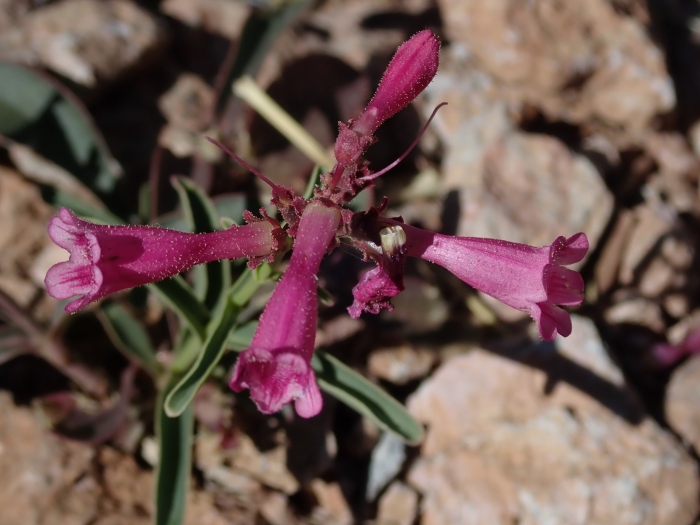Parry’s Penstemon
(Penstemon parryi)
Parry’s Penstemon (Penstemon parryi)
/
/

Nolan Exe
CC BY 4.0
Image By:
Nolan Exe
Recorded By:
Copyright:
CC BY 4.0
Copyright Notice:
Photo by: Nolan Exe | License Type: CC BY 4.0 | License URL: http://creativecommons.org/licenses/by/4.0/ | Rights Holder: Nolan Exe | Publisher: iNaturalist | Date Created: 2021-04-22T03:06:41-07:00 |




















































Estimated Native Range
Summary
Penstemon parryi, commonly known as Parry’s Penstemon, Parry’s Beardtongue, or Desert Penstemon, is a perennial herb native to the Sonoran Desert in Southern Arizona and Northern Mexico. It is particularly adapted to open desert scrub, rocky slopes, and desert washes where it contributes to the local ecology by providing nectar for pollinators. This plant typically blooms in March and April, with flowering in the wild usually occurring in the second year. However, in cultivation, flowering can be achieved in the first year if seeds are sown in autumn. Penstemon parryi has lanceolate bluish-green leaves that form a basal rosette, and erect flower stalks that reach 2 to 5 feet in height. The stalks are topped with numerous tubular flowers that are naturally pink but have been selected horticulturally for red hues.
The showy flowers of Parry’s Penstemon make it a popular choice for xeriscaping, attracting hummingbirds and providing a vibrant splash of color in arid landscapes. It is drought-tolerant, thriving with minimal supplemental watering once established, and prefers well-draining soils. While it can tolerate part shade, full sun exposure encourages the most prolific blooming. It is often used in rock gardens, native plant landscapes, and as a border plant. Gardeners should be aware that while Parry’s Penstemon is generally disease-free, it can be short-lived and may require reseeding or replanting every few years to maintain a presence in the garden.CC BY-SA 4.0
The showy flowers of Parry’s Penstemon make it a popular choice for xeriscaping, attracting hummingbirds and providing a vibrant splash of color in arid landscapes. It is drought-tolerant, thriving with minimal supplemental watering once established, and prefers well-draining soils. While it can tolerate part shade, full sun exposure encourages the most prolific blooming. It is often used in rock gardens, native plant landscapes, and as a border plant. Gardeners should be aware that while Parry’s Penstemon is generally disease-free, it can be short-lived and may require reseeding or replanting every few years to maintain a presence in the garden.CC BY-SA 4.0
Plant Description
- Plant Type: Herb
- Height: 1-3 feet
- Width: 1-3 feet
- Growth Rate: Moderate
- Flower Color: Pink
- Flowering Season: Spring
- Leaf Retention: Deciduous
Growth Requirements
- Sun: Full Sun, Part Shade
- Water: Low
- Drainage: Medium, Fast
Common Uses
Bank Stabilization, Bee Garden, Bird Garden, Border Plant, Butterfly Garden, Deer Resistant, Drought Tolerant, Groundcover, Hummingbird Garden, Low Maintenance, Potted Plant, Rabbit Resistant, Rock Garden, Showy Flowers, Street Planting
Natural Habitat
Native to open desert scrub, rocky slopes, and desert washes in the Sonoran Desert
Other Names
Common Names: Parry’s Penstemon, Desert Penstemon
Scientific Names: , Penstemon parryi, Penstemon puniceus var. parryi, Penstemon shantzii var. incognitus, Penstemon shantzii,
GBIF Accepted Name: Penstemon parryi A.Gray